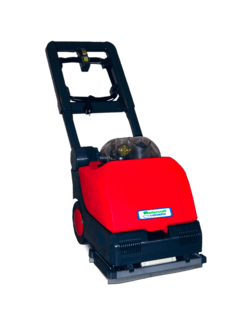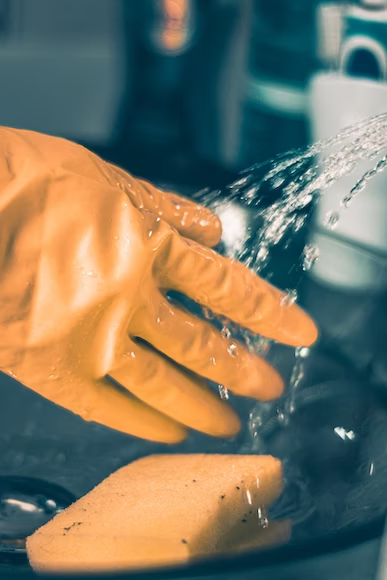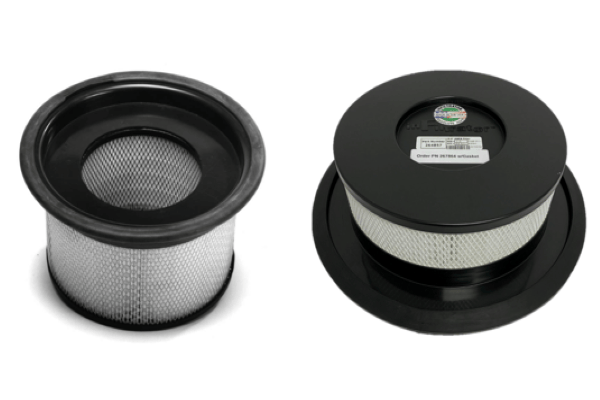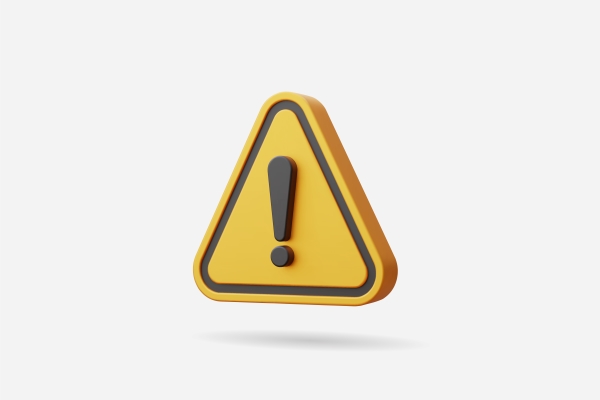Keeping your floor machines running efficiently, clean, and safe is challenging. Machines run 24/7 and often in difficult conditions, with operators in and out constantly.
Keeping your floor machine in tip-top condition is a constant juggling act, but it doesn't have to be that way. You can follow many small tips and tricks to keep things simple, organized, and effective.
To help you get the most out of your machines and make things easier for yourself, here's our ultimate guide to maintaining your floor-cleaning machines:
READ THE MANUFACTURER'S INSTRUCTIONS CAREFULLY
Floor cleaning equipment is a significant investment. You want to ensure you get the most out of it. The manufacturer's instructions outline everything you need to know about your specific model, including how often it needs to be serviced.
INSPECT THE FLOOR MACHINE REGULARLY
Check for any damage and make sure that all parts are functioning properly. Service and repair costs of floor cleaning machines can be expensive, so it's best to catch any problems early on.
CLEAN THE FLOOR MACHINE AFTER EACH USE
This includes wiping down the body of the machine, as well as cleaning the brushes and pads. For proper floor scrubber maintenance, emptying the recovery tank and washing it out with soap and water is essential.

STORE THE FLOOR MACHINE PROPERLY WHEN NOT IN USE
Proper storage of floor machines includes covering the machine to protect it from dust and debris. Clean the solution and recovery tanks to prevent mold and mildew build-up. The solution tank should also be rinsed with clean water after each use.
PLAN YOUR ROUTINE MAINTENANCE
Maintenance tasks such as changing the brushes and pads and emptying and cleaning the recovery tank should be done regularly. These tasks can be time-consuming, so planning and scheduling them in your routine is essential.
You'll need to maintain your machines regularly to keep them in good condition. This will also help you identify issues before they become a big problem. You can use a maintenance checklist or an app to track everything and ensure nothing gets missed.
This will also help you maintain safe working practices, as you can identify any hazards or issues in advance. When you first get your new machines, you should do a thorough inspection to familiarize yourself with the parts and be able to spot any potential issues.
This includes a thorough cleaning of the machine and the surrounding area. Then, you should follow this up with a regular maintenance schedule.
CHECK YOUR BELTS AND SEALS
Your machines will have belts and seals that keep them protected and running smoothly. You should check their condition regularly for any signs of damage or wear and tear. You can do this by visually inspecting them and, if possible, feeling their thickness.
You should also check the belts, bearings, and pulleys to ensure they're correctly aligned and aren't rubbing against each other or the machine's frame. If you notice any damage, you should replace the belt or seal as soon as possible. This will prevent any further damage from occurring and keep things running smoothly.
CHECK YOUR VENTS & HOSES
Machines with ducting will have vents and hoses that transport dust, dirt, and water away from the machine. You should check these for cracks, tears, or holes that could cause leaks or clogs. You can do this by inspecting them visually and feeling for any abnormalities.
If you notice a tear or crack, you should replace the part as soon as possible. This will prevent any dust and water from escaping and causing damage. It will also keep your machine cleaner and more efficient. If you notice clogs, try cleaning them with a broom or a small wire brush.
However, if they don't clear, you should replace the parts as soon as possible. This will prevent them from getting worse and causing damage to the machine.

SOLUTION TANKS NEED TO BE EMPTIED AND CLEANED
The floor machine's solution tank should be emptied and cleaned frequently. This will prevent mold and mildew build-up and keep the machine running smoothly. You can use a garden hose to flush out the tank.
You should also add a cup of bleach to the tank and let it soak for an hour before flushing it out again. This will kill any mold or mildew present and prevent it from returning. After you've flushed the tank, rinse it with clean water to remove any residue.
CHECK & LUBRICATE YOUR MACHINE'S BEARINGS
An auto scrubber's bearings are what allow the brushes to rotate. You should check them regularly for any signs of wear or damage.
Your machine will likely have metal bearings, which help it move smoothly.
To keep these parts in good shape, checking and lubricating them routinely is important. This will make them run smoothly and reduce noise.
To inspect the bearings for damage or wear, simply remove the cowl.
If you see any dirt or grime, use a brush to clean them. If you notice any signs of wear, applying a small amount of grease will help them run smoothly and last longer. For other moving parts like wheels and handles, adding oil will make them move smoothly and increase their longevity.
CHECK YOUR HOSES AND PIPES TOO
Your vacuum hoses and pipes should be clear of debris and be the correct length for your machine. If these become clogged or are too long, it could cause your machine to not function properly.
You should check them often for any damage or signs of wear or tear. If you notice any issues, you can clean them with a brush or replace them if they're too damaged.
Similarly, your water hoses should also be visually inspected and cleaned regularly. This will prevent debris from clogging the pipes and causing damage. It will also help keep the machine cleaner and more efficient.

CHANGE YOUR FILTERS
Your vacuum and filtration system will remove dirt and dust from your cleaning water. However, these will eventually become clogged and need to be replaced.
Therefore, changing your filters regularly to keep them clean and remove any trapped dirt and dust would be best. You can do this by following the manufacturer's instructions.
If you don't change them regularly, they'll become clogged and won't be able to clean your water effectively. This will cause the machine to work harder and be louder. It will also increase repair costs, as they will break more frequently.
DON'T FORGET THE FLOOR DISC
An auto scrubber floor disc is what helps it move across the floor. You should check it regularly for any wear or damage.
Your floor disc or pads are one of the most critical parts of your machine. They'll wear and tear over time, especially if you clean them daily and in harsh conditions.
If you notice any damage on your floor pads, you can replace them. If you don't replace them, it could cause damage to your machine and make it louder. It will also make cleaning more difficult, as the worn-out pads won't clean your floor as effectively.
If you notice the disc becoming clogged with dirt and debris, you can clean it with a broom or a small wire brush. To prevent this from happening regularly, it's best to vacuum the disc while you are using the machine.
The pad driver is another vital part of your floor machine. This is what helps the floor pad rotate. Check it often to make sure it remains in working order.

LOOK OUT FOR WARNING SIGNS
Many warning signs will indicate something is wrong with your machines. That’s why regular inspections can help to detect these red flags early on.
Loose connections and excessive wear and tear are two of the most common warning signs. Battery terminals that are corroded or damaged can also signal that something is wrong with your machine.
If you notice any damage, you should address it as soon as possible. For example, if your belts or seals are worn or torn, this could cause your machine to malfunction or break down.
Similarly, if your vents and hoses are clogged, they'll cause your machine not to function properly. If your bearings or bearings are worn, they may make too much noise. And if your filters are clogged, they won't be able to clean your water effectively.
CLEAN EVERYTHING CONSISTENTLY
Dirty water and leftover debris can cause your floor machine to break down. To prevent this, you should clean everything often.
Keeping your machines clean will not only keep them in good condition, but it will also keep them running efficiently. It will also make your job as an operator easier, as you won't have to deal with many maintenance issues or regular breakdowns.
You can clean your machines by vacuuming them regularly and using a brush to remove dirt or debris. If you need to clean your machine's exterior, use a damp cloth to remove dirt or debris.
If you need to clean the interior, use a soft brush and warm water. Avoid using chemicals, as they could damage your machine and cause the parts to rust.
CONCLUSION
Keeping your floor machines clean and well-maintained is a challenge. This is especially true if you have more than one machine. Luckily, there are many things you can do to make this process easier.
Start by taking the time to familiarize yourself with your machines. Next, create a cleaning routine, and follow it consistently. Finally, inspect your machines for warning signs and act immediately if something is wrong.
These simple tips will help keep your floor machine in good condition and ensure it lasts many years.
0 comments